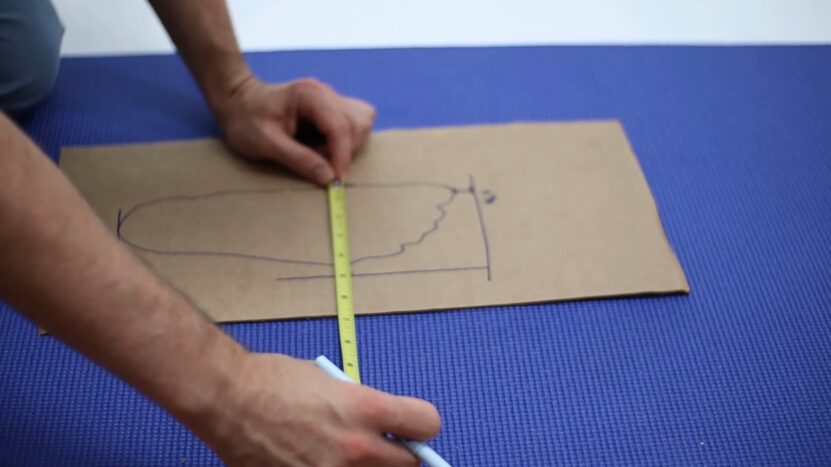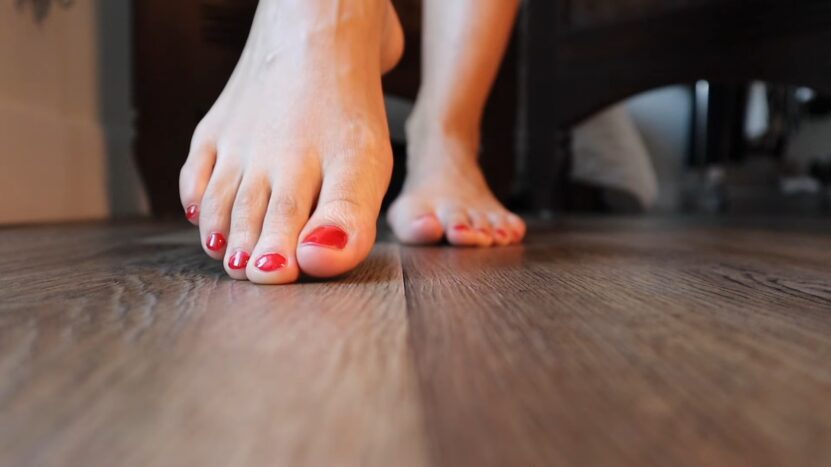When it comes to footwear, there’s more than meets the eye. Quality, style, durability, and perhaps most importantly, size are all critical factors to consider.
This guide aims to unravel the mysteries of New Balance’s shoe size chart, an industry leader renowned for their quality and diversity in footwear. This in-depth exploration will serve as a beacon, guiding you through the intricacies of finding the perfect shoe size, ensuring your comfort, and enhancing your style.
The Importance of a Proper Fit

It’s no secret that shoes that fit well can make or break your day. The importance of a proper fit extends beyond aesthetics and reaches into the realm of health. Ill-fitting shoes can lead to a myriad of problems, including blisters, corns, calluses, and even long-term foot deformities. In more severe cases, they can contribute to posture issues and back pain.
Athletes, in particular, need shoes that fit like a glove. Footwear that doesn’t provide sufficient support or is too loose can lead to injuries, hampering performance. Imagine trying to complete a marathon or compete in a high-stakes match in shoes that are pinching your toes or sliding off your heels!
When you invest in a pair of New Balance shoes, you’re not just buying footwear – you’re investing in your comfort and overall well-being. However, to get the most out of your shoes, understanding how to find the correct size is paramount. Let’s delve into how you can achieve that perfect fit.
How to Measure Your Feet for the Perfect Fit

Measuring your feet is an integral part of finding the perfect fit. It might seem a bit tedious, but it’s a task well worth the effort. All you need is a blank sheet of paper, a ruler or measuring tape, and a pen. Start by placing your foot firmly on the paper and drawing its outline. Then, measure the length and width at the widest points.
It’s important to measure your feet in the evening since feet tend to swell slightly throughout the day. Also, always measure both feet as they may vary in size. Most people have one foot that’s slightly larger than the other, so always go with the size of the larger foot.
After you’ve taken the measurements, you can refer to the New Balance size chart to find the corresponding shoe size. But what does this chart look like, and how does it work? Let’s dive into the details.
New Balance Size Chart
At first glance, a shoe size chart may seem a bit complicated. However, the New Balance size chart is designed to make finding your perfect fit a breeze. It’s a comprehensive table that provides corresponding shoe sizes based on the length and width measurements of your feet.
The chart is divided into categories for men, women, and kids, with separate columns for US, UK, EU, and CM (centimeters) sizes. It’s designed to offer a global perspective on shoe sizing, accommodating the various sizing systems used around the world.
By comparing your foot measurements with the numbers on the chart, you can pinpoint the size that will offer you the most comfort and support. But how exactly does this process work? Let’s break it down step by step.
Finding Your Ideal New Balance Shoe Size: A Step-by-Step Guide

Now that you have your foot measurements and understand the structure of the size chart, it’s time to match the two. Start by finding your foot length measurement in the CM column. Then, follow the row across to find your corresponding US, UK, or EU size. Remember, the brand’s sizing can be different from other brands, so it’s essential to rely on your measurements rather than your usual size.
The next step is determining your shoe width, which is often overlooked but equally crucial for the perfect fit. New Balance offers a variety of width sizes, ranging from extra narrow to extra wide. Compare your width measurement with the chart to find the width that best suits your feet.
Lastly, it’s always a good idea to try the shoes on in person whenever possible. Online shopping is convenient, but nothing beats the certainty of trying on a pair of shoes and walking around in them. However, if you’re shopping online, rest assured that the New Balance size chart will guide you to the right size.
Exploring the Different Width Options
Unlike many other brands, New Balance recognizes that feet are as unique as fingerprints. Therefore, they offer a wide range of width options to accommodate different foot shapes. Their sizes range from ‘B’ for women and ‘D’ for men (considered standard width) to ‘4E’ or ‘6E’ (extra wide), allowing you to find a shoe that hugs your foot comfortably without pinching or sliding.
This commitment to diverse widths sets New Balance apart. They understand that width is not a one-size-fits-all variable and have made strides to accommodate as many variations as possible. This ensures maximum comfort and stability, regardless of whether your feet are narrow, standard, or wide.
To find your ideal width, simply refer to the width portion of the New Balance size chart. Match your foot’s width measurement to the corresponding letter or letters on the chart. This will ensure a fit that’s snug but not too tight, providing optimal support and comfort.
Tips for Navigating Between Men’s and Women’s Sizes
In certain situations, you might find yourself eyeing a pair of New Balance shoes designed for the opposite sex. Or perhaps you’re a woman with wider feet or a man with narrower feet, making the alternative sex’s sizes more appealing. No worries – the New Balance size chart has got you covered.
The general rule of thumb is that there’s approximately a 1.5 size difference between men’s and women’s shoes, with men’s sizes being larger. For instance, if you’re a woman who typically wears a size 8, you’d likely fit into a men’s size 6.5.
However, remember to consider width. Women’s shoes are typically narrower than men’s, so if you’re switching over, you might need a wider size than you’re used to. Always refer to the size chart to make sure you’re making the right choice.
New Balance Size Chart for Kids
When it comes to children’s shoes, the right fit is even more crucial. Kids’ feet are constantly growing and developing, and the wrong shoe size can lead to discomfort or even developmental issues. The New Balance size chart for kids is here to ensure your child gets the right fit every time.
Just like the adult chart, the kids’ size chart includes measurements in US, UK, EU, and CM. The chart also includes width options, ensuring your child’s shoes are neither too narrow nor too wide.
Remember, kids’ feet grow quickly, so it’s advisable to check their shoe size every few months. Also, ensure there’s about a thumb’s width of space at the end of the shoe to accommodate for growth and foot movement while walking or running.
Considering Foot Shape and Arch Support in New Balance Sizing

Foot shape and arch type can play a significant role in determining the perfect shoe size. Whether you have a flat foot, a high arch, or something in between, New Balance has a variety of shoes designed to provide the support your feet need.
New Balance designs their shoes with various types of support, making them an excellent choice for individuals who need specialized footwear. Whether you overpronate (roll your feet inward) or underpronate (roll your feet outward), there’s a New Balance shoe for you.
When considering foot shape and arch support, remember to factor in your activity level and the type of shoes you’re buying. Running shoes, for instance, often need more arch support compared to casual shoes. Understanding these nuances can help you use the New Balance size chart to its fullest potential.
Troubleshooting Common Sizing Issues
Despite your best efforts, you might encounter some common sizing issues. For example, your shoes might fit perfectly in length but feel too tight or too loose in width. Or, you might find that the size that usually fits you perfectly feels a bit off in a specific style.
If the shoe feels too tight or too narrow, consider moving up a width rather than a size. Similarly, if the shoe is too loose, but the length is perfect, try going down a width. Remember, New Balance offers a broad range of widths for precisely this reason.
If a specific style doesn’t seem to fit right, remember that different styles can sometimes vary slightly in fit. Sneakers might fit differently than running shoes, even if they’re the same size. In such cases, don’t hesitate to try a different size or style until you find the perfect fit.
Size Chart for Different Shoe Styles: Sneakers, Running Shoes, and More

One of the strengths of New Balance is their extensive range of shoe styles. Whether you’re looking for stylish sneakers, performance-driven running shoes, or comfortable walking shoes, New Balance has you covered. But do these different styles require different sizes? Not necessarily.
While the basic sizing remains consistent across different styles, the fit can vary based on the shoe’s design and purpose. Running shoes, for example, often have more cushioning and support compared to casual sneakers, which can influence the shoe’s overall fit.
However, by using the New Balance size chart and understanding your foot measurements, you can navigate these variations effortlessly. Remember, the chart is your key to unlocking the perfect fit, regardless of the style you choose.
How to Use the New Balance Size Chart Effectively

By now, you’re familiar with the basics of the New Balance size chart and the various factors that influence shoe sizing. Here are a few tips to use the size chart effectively:
- Always refer to your most recent foot measurements. Feet can change over time, especially in kids.
- Consider both length and width. A shoe that’s the right length but the wrong width can cause just as much discomfort as a shoe that’s the wrong size.
- Keep in mind the type of socks you’ll be wearing. Thicker socks might require a slightly larger shoe size.
- Don’t forget to consider the type of support you need. Different styles offer different levels of support, which can influence the size and style you choose.
By keeping these tips in mind, you can utilize the New Balance size chart to its fullest potential, ensuring you find the perfect shoe size every time. Also, get some useful tips on how to clean your New Balance sneakers and always look stylish.
Final Words
Navigating the world of shoe sizes doesn’t have to be intimidating. With the New Balance size chart and this comprehensive guide, you’re equipped to find the perfect fit, offering the comfort, support, and style you’re looking for.
Remember, the key to a great shoe experience is the right size and fit. Whether you’re an athlete looking to enhance your performance, a fashion enthusiast trying to make a style statement, or a parent seeking comfortable shoes for your rapidly growing child, the New Balance size chart is your reliable guide. Take the time to understand it, measure your feet accurately, and step into a world of perfect-fitting shoes!

